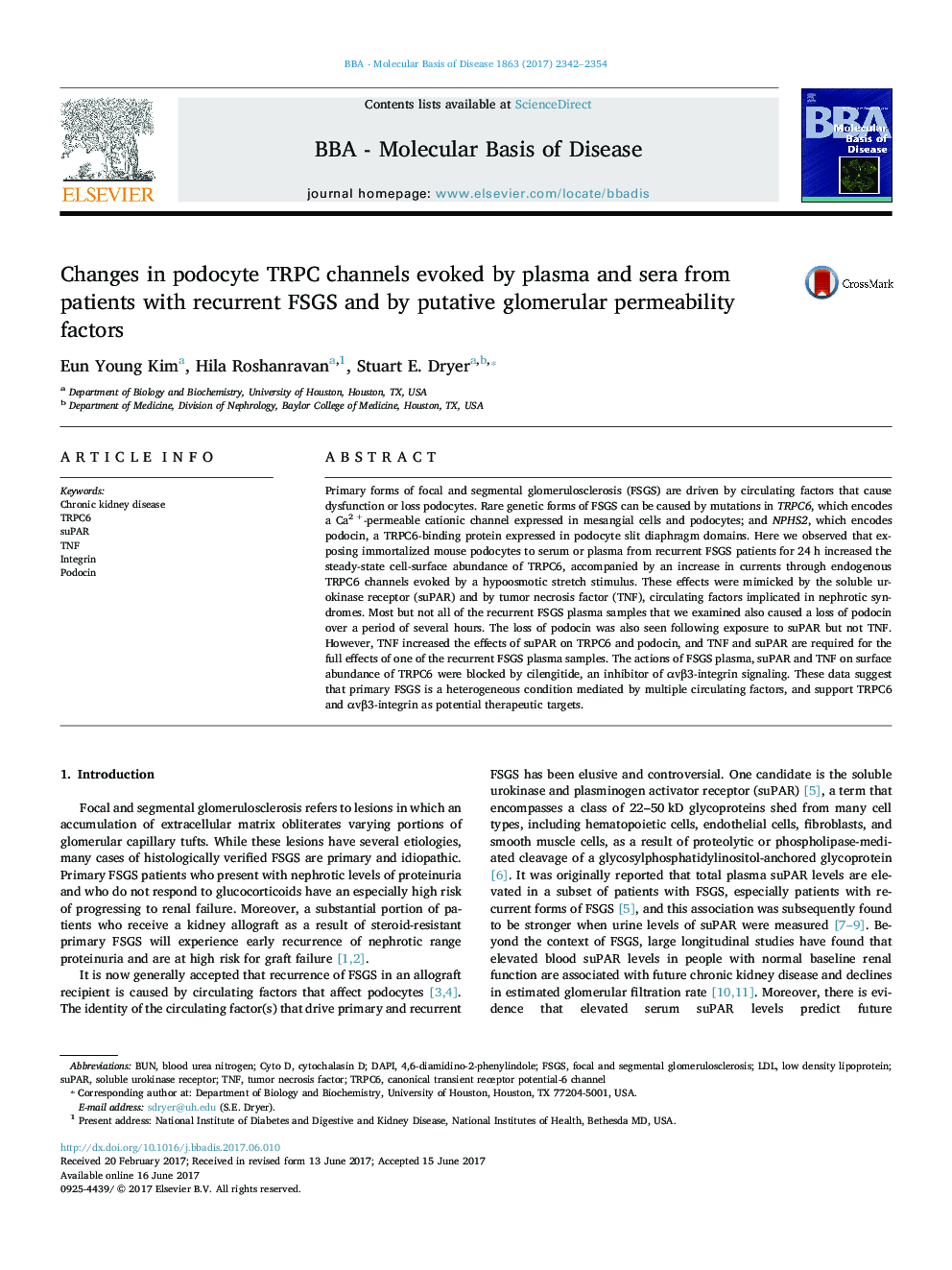| Article ID | Journal | Published Year | Pages | File Type |
|---|---|---|---|---|
| 5501007 | Biochimica et Biophysica Acta (BBA) - Molecular Basis of Disease | 2017 | 13 Pages |
â¢Circulating factors in patients with recurrent FSGS up-regulate podocyte TRPC6 channels.â¢These effects are mimicked by recombinant suPAR.â¢The effects of suPAR are increased in the presence of TNF.â¢Modulation of TRPC6 by suPAR, TNF and circulating factors requires signaling through integrins.â¢TRPC6 and αVβ3 integrin may be useful therapeutic targets for primary FSGS.
Primary forms of focal and segmental glomerulosclerosis (FSGS) are driven by circulating factors that cause dysfunction or loss podocytes. Rare genetic forms of FSGS can be caused by mutations in TRPC6, which encodes a Ca2 +-permeable cationic channel expressed in mesangial cells and podocytes; and NPHS2, which encodes podocin, a TRPC6-binding protein expressed in podocyte slit diaphragm domains. Here we observed that exposing immortalized mouse podocytes to serum or plasma from recurrent FSGS patients for 24 h increased the steady-state cell-surface abundance of TRPC6, accompanied by an increase in currents through endogenous TRPC6 channels evoked by a hypoosmotic stretch stimulus. These effects were mimicked by the soluble urokinase receptor (suPAR) and by tumor necrosis factor (TNF), circulating factors implicated in nephrotic syndromes. Most but not all of the recurrent FSGS plasma samples that we examined also caused a loss of podocin over a period of several hours. The loss of podocin was also seen following exposure to suPAR but not TNF. However, TNF increased the effects of suPAR on TRPC6 and podocin, and TNF and suPAR are required for the full effects of one of the recurrent FSGS plasma samples. The actions of FSGS plasma, suPAR and TNF on surface abundance of TRPC6 were blocked by cilengitide, an inhibitor of αvβ3-integrin signaling. These data suggest that primary FSGS is a heterogeneous condition mediated by multiple circulating factors, and support TRPC6 and αvβ3-integrin as potential therapeutic targets.
